First introduced in 1961, the Jaguar E-Type is a legendary model from the British brand. Recognized as the most beautiful car in the world, the E-Type is an iconic representation of automotive design.
To bring this timeless beauty into the modern era, Jaguar has unveiled the E-Type Zero, a restoration project by Jaguar Land Rover’s heritage division. Hidden beneath its classic exterior lies a secret that sets it apart.
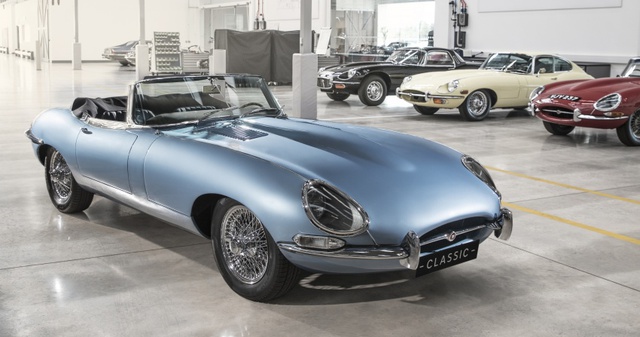
At first glance, the Jaguar E-Type Zero looks identical to the original E-Type. Its exterior design retains the iconic curves, soft blue color, classic wire wheels, long hood, and short tail that define the E-Type’s allure.

The only noticeable change is the addition of LED headlights, which offer improved visibility and energy efficiency.

Step inside the Jaguar E-Type Zero, and you’ll find a retro-modern interior. The redesigned dashboard features a digital display that emulates the original analog gauges, along with a touchscreen and rotary selector reminiscent of newer Jaguar models. The metal three-spoke steering wheel with a wooden outer rim remains true to the original design.
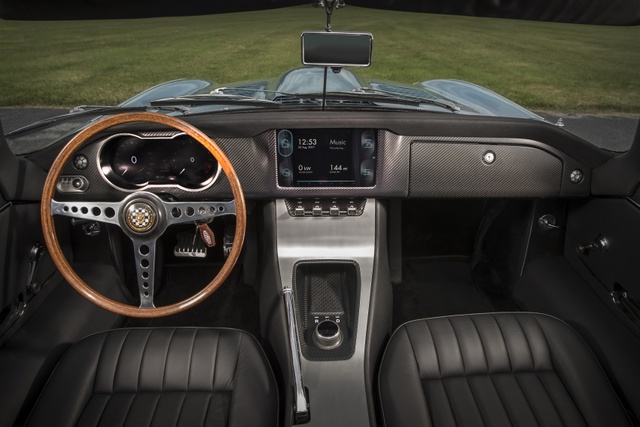
But the real secret of the Jaguar E-Type Zero becomes apparent when you start the car—you won’t hear the roar of a traditional engine. That’s because the original 4.2-liter XK inline-six gasoline engine has been replaced with a specially designed electric motor generating up to 220 horsepower. This electric motor delivers 30 more horsepower than the original engine.
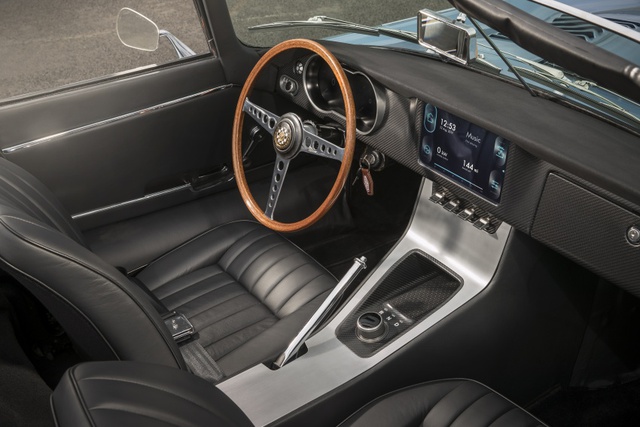
Located in the traditional gearbox position, behind the motor is a 40 kWh lithium-ion battery pack, which mimics the size and weight of a conventional 6-cylinder gasoline engine. This placement maintains the original V6 engine’s position, preserving the suspension and braking system.

The electric motor delivers power to the rear axle, enabling the Jaguar E-Type Zero to accelerate from 0-100 km/h in just 5.5 seconds—approximately 1 second faster than the original Series 1 E-Type. With a full battery charge, which takes around 6 hours depending on the power source, the car can travel up to 270 km.
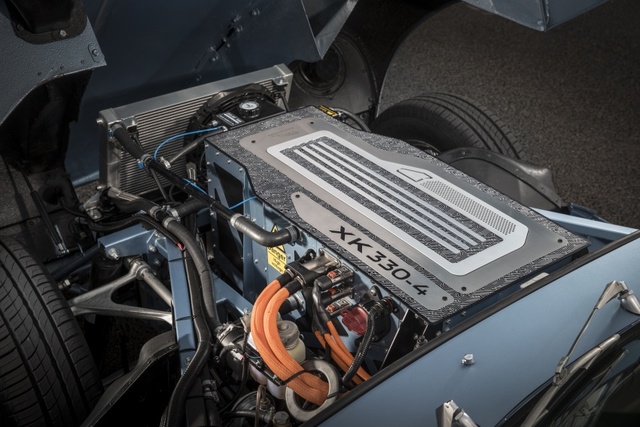
Jaguar has integrated technology and components from the upcoming I-Pace SUV model’s electric drivetrain into the E-Type Zero. This drivetrain can also be adapted to other Jaguar models powered by the XK inline-six engine, including the XK120, Mark 2, and XJ6.







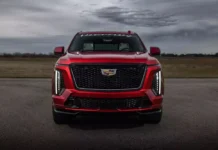





















![[CAR REVIEW] The Newly Launched BMW iX3 in Vietnam: Compact, Practical, and Expensive](https://vnauto.net/wp-content/uploads/2023/10/xehay-bmwix3-01082023-9-150x150.jpg)
![[QUICK REVIEW] VinFast VF5: Extremely Affordable, Spacious, and Well-Equipped](https://vnauto.net/wp-content/uploads/2023/10/Xehay_VF5plus_21042318-150x150.jpg)
![[CAR REVIEW] User Reviews of VinFast VF 9: Stylish, Luxurious, Smooth Ride, and Perfect for Families](https://vnauto.net/wp-content/uploads/2023/10/xehay-vinfastvf9-09092023-12-150x150.jpg)
![[CAR REVIEW] Wuling Mini EV: Affordable, Compact, Convenient, but…](https://vnauto.net/wp-content/uploads/2023/10/xehay-wulingev-16062023-8-150x150.jpg)







